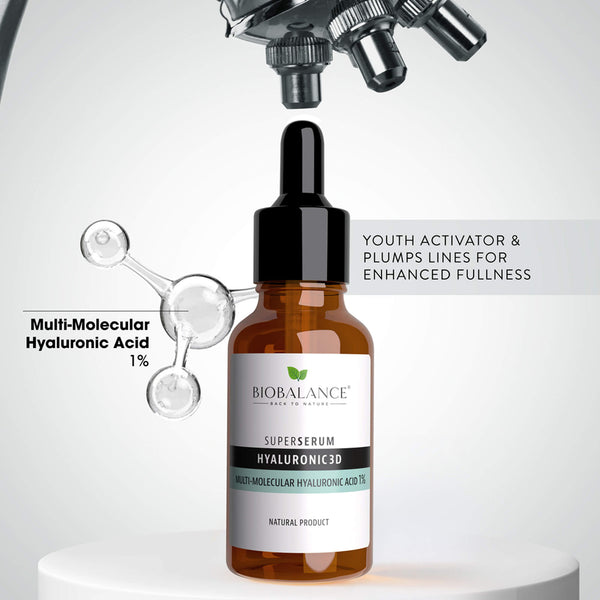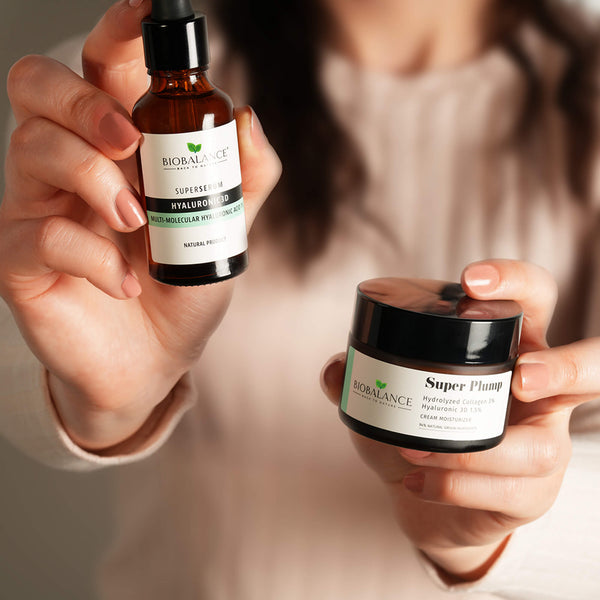
Hyaluronic Acid: A Skincare Classic That's Never Out of Style
In the ever-evolving world of beauty-where new actives emerge like fleeting trends and yesterday's miracle ingredients quietly fade-one name continues to reign supreme: hyaluronic acid. Elegant in function, understated in fame, yet utterly indispensable. hyaluronic acid has secured its place in the skincare hall of fame- not through hype, but through results.
Despite its scientific-sounding name, hyaluronic acid isn't a harsh chemical or a passing craze. It's a naturally occurring substance in the body, found abundantly in the skin, connective tissue, and eyes. Its superpower? Hydration-real, deep, intelligent hydration.
At its core, hyaluronic acid (often abbreviated to HA) is a glycosaminoglycan— a type of sugar molecule. But this particular molecule has an extraordinary capacity: it binds to water. Not just a little, but a lot. Just one gram of HA can hold up to six litres of water. Imagine that level of moisture retention working quietly in your skin, delivering plumpness, softness, and the kind of glow that no highlighter can replicate.
This unmatched ability to draw and hold moisture makes HA a skincare icon. It doesn't just hydrate- it transforms. When skin is adequately moisturised at every level, it becomes smoother, firmer, more elastic. Fine lines appear less noticeable, complexions feel bouncier, and the skin's protective barrier becomes stronger and more resilient. In the language of beauty editors and dermatologists alike: it gives skin that elusive "lit from within" quality.
But like all enduring legends, hyaluronic acid has a story worth telling. First discovered in 1934 by scientists Karl Meyer and John Palmer, HA was initially isolated from an unlikely source: the combs of roosters. Its name- drawn from the Greek word hyalos, meaning glassy-refers to its clear, viscous texture. While the beauty world didn't immediately embrace it, HA quickly gained ground in medical circles, where it was used for its lubricating and healing properties in joint surgery, eye operations, and wound repair.
The crossover to cosmetics came decades later, as researchers began exploring its topical potential. The logic was simple: if hyaluronic acid could hold moisture within the body, could it do the same when applied to the skin? The answer was a resounding yes. By the early 2000s, HA was appearing in moisturisers, serums, and facial masks, first in niche brands and then in every major product line. It wasn't long before it transitioned from a secret weapon to a skincare staple.
So, what makes it so universally loved?
Firstly, it's incredibly versatile. Whether you're oily, dry, sensitive, combination, or somewhere in between, your skin needs hydration. Hyaluronic acid delivers it without weight, greasiness, or irritation. It doesn't clog pores, cause breakouts, or trigger inflammation. It simply provides the skin with what it needs most: water.
Secondly, it's biocompatible. Because the body produces HA naturally, it's recognised by the skin and rarely causes adverse reactions. That's why you'll find it in formulations for even the most reactive or delicate complexions. Unlike some high-performing actives, hyaluronic acid isn't seasonal or occasional. It's designed for daily use, all year round.
At BioBalance, we're devoted to more than just great ingredients— we re committed to intelligent formulation. We don't include hyaluronic acid simply because it's popular. We use multi-molecular weight HA, allowing the ingredient to work at various levels of the skin. Low molecular weight HA penetrates more deeply to deliver long-lasting hydration,
while high molecular weight HA works on the surface to smooth, plump, and protect. Together, they create a 360-degree hydration system that supports the skin in every moment.
But hyaluronic acid isn't just about hydration-it's also about preservation. Skin that's hydrated is less prone to the signs of ageing. Wrinkles look softer. Texture feels smoother. Barrier function improves. Most importantly, the skin is better able to perform its natural roles: healing, protecting, renewing. When hydration is optimised, skin doesn't just look better —it is better.
It's also a remarkably elegant team player. Hyaluronic acid pairs beautifully with a host of other actives - vitamin C, niacinamide, peptides, retinol-without disrupting their function. In fact, it often enhances their effectiveness by keeping the skin barrier calm and hydrated, minimising the risk of dryness or irritation. This harmony makes HA a quiet powerhouse in even the most sophisticated skincare routines. So, how do you use it well?
There's a trick to getting the best out of your hyaluronic acid: apply it to slightly damp skin. Because HA is a humectant—it pulls moisture towards it-it's more effective when there's already water on the surface. Think post-cleanse, just before your toner or essence dries down. Follow it up with a moisturiser to lock everything in, and you've just given your skin a tall glass of water with a lid on top.
Use it morning and night. There's no downtime, no acclimatisation. Just results. Even a simple HA serum can become a transformative step when used consistently.
At BioBalance, our formulations are driven by balance-not only in what we put into our products but in how they make your skin feel. Our hyaluronic acid-based skincare isn't about masking flaws or chasing trends-it's about restoring harmony, hydration, and health. It's skincare that works with your skin, not against it.
In the end, hyaluronic acid is more than just a hydrating ingredient. It's a symbol of what modern skincare should be: effective, elegant, and rooted in science. It's not the loudest or the trendiest-but it's the one that always delivers. And when something works this well, for this long, across this many skin types? That's more than a trend. That's timeless.





